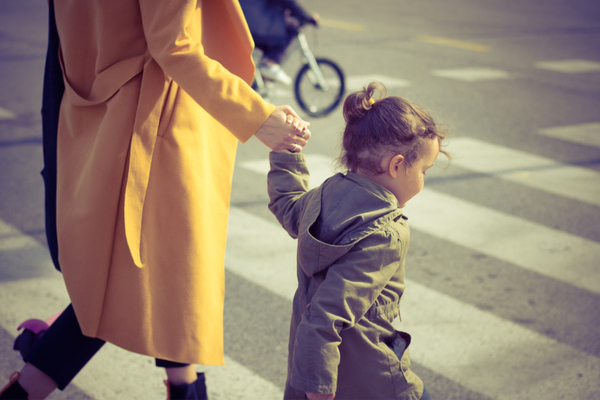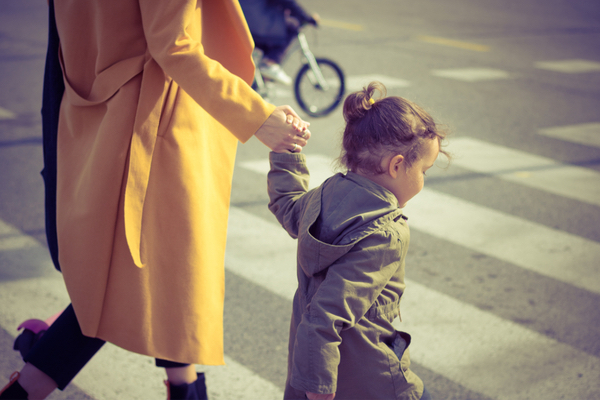
As a parent, grandparent and educator, I am fascinated by the interactions of parents and their children. When I travel to New York for work several times a month, I have lots of opportunities for fieldwork as I make my way from Manhattan to Brooklyn. There are families with young children everywhere!
While venturing out for a long walk this past Saturday morning with my husband, Mark, I witnessed a father and his young son negotiating how the child would walk across the street. Actually, negotiating is the wrong word, because the parent was very clear that there was only one way to get to the other side… holding hands.
As those of you who have struggled with the independent child who is not a hand holder know, a situation like this—where a child’s safety is at stake—can be especially challenging,
Pedestrian accidents are a leading cause of death and trauma in young children and it is a matter that parents and caregivers should be informed and clear about.
Children should be taught from a very early age about street safety. Modeling actions and saying the words out loud, “Stop, look (left, right and left again) and listen” should be part of every stroll when young children are out walking. As well as learning to recognize a cross-walk or as it is known in some places, a zebra crossing (kids love that!) And no one’s going to like this part: holding hands is an absolute imperative.
Children are impulsive and even those children who run ahead and seem to always stop when they get to the corner, cannot be trusted to not dash out for a ball or shiny coin or some other distraction. Children under the age of 7 do not have the cognitive, perceptual or behavioral skills to be trusted not to act quickly and impulsively in certain situations. According to the American Academy of Pediatrics, children up to the age of 10 are not developmentally capable of judging the distance and speed of cars.
An Academy study showed that parent’s expectations of their child’s ability to assess street safety were not in line with their developmental ability and in most cases, parents overestimated their child’s ability to correctly judge safety situations.
Everything about parenting is a balancing act. Reinforcing your child’s independence while keeping them safe and healthy is just another example of the daily challenges all parents face. But, just like the use of a car seat or seat belt, pedestrian safety should not be negotiable.
I will add that in addition to modeling good street safe behavior, including not walking and texting or looking at your phone, you can have a conversation with your child about how to be safe before venturing out. That’s what good nursery school teachers do before every outing, whether it’s moving from the classroom to the gym, or venturing out to the neighborhood park.
When parents at our school were surveyed about the pluses and minuses of using the local city park for our outdoor play, many parents cited going to the nearby park as a positive because in addition to being a great park for fresh air and physical activity, their children through their daily walks to the park had become better at street safety; holding hands and knowing what to do at each street crossing.
The father that I witnessed while strolling through Brooklyn, reminded his whining and resistant child, in a kind but firm voice, that the rule was that you hold hands when crossing the street. No discussion. The child didn’t like it, complained loudly, but got to the other side of an extremely busy street safely.
I restrained myself from approaching this father and congratulating him on his clarity and success. But what I witnessed reminded me of the importance of this issue. Safe travels!











